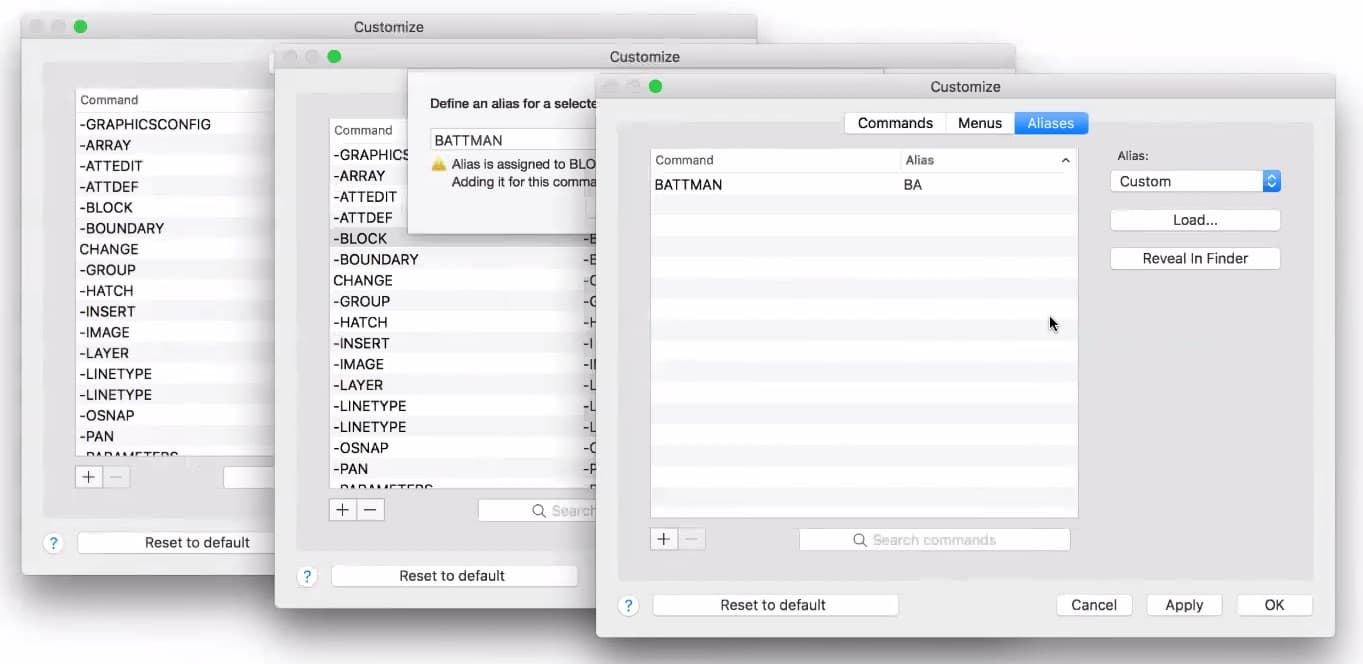

- #FLATTEN LINES IN AUTOCAD FOR MAC HOW TO#
- #FLATTEN LINES IN AUTOCAD FOR MAC FOR MAC#
- #FLATTEN LINES IN AUTOCAD FOR MAC WINDOWS#
Set the Z elevation of the start and end points of all lines to 0 (or whatever elevation you want). Select all of the Line entities we just created. In most cases if I wanted to convert 3D to 2D, I’d do this: I have had troubles with FLATTEN in the past however, because I think it does some odd stuff sometimes with merging lines and approximating… so I tend to avoid it where possible. The FLATTEN command is an option for making the polyline flat (i.e., visibly the same as before, but drawn as a 2D line on whatever UCS you’re working on). #FLATTEN LINES IN AUTOCAD FOR MAC WINDOWS#
However, when I do, half of the entities in the walls and windows disappear causing me to redraw them. I'm using 2007 and attempted to Flatten all the objects. Therefore historically there have not been native commands to convert between the polyline types. I've received a floorplan from a client that was created in Architectural Desktop and I need to convert everything to 2D.
#FLATTEN LINES IN AUTOCAD FOR MAC HOW TO#
Both the LWPolyline and the Polyline only permit the creation of geometry on a flat plane (UCS), but the 3D polyline allows points anywhere in 3D space.Ĭonverting between the various types therefore has obvious difficulty, because going from 3D to 2D means you’re going to have to remove some of the 3D information from the polyline, and AutoCAD® could interpret how to do this in many ways. The third polyline type is the 3D polyline, which as the name implies is a 3D version. Chances are though, unless you’re working on some nasty generated drawing, you’re probably using LWPolylines. FLATTEN: This is a very useful command to know if you have trouble with lines that for some reason are not on 0 height. It can be confusing because the LWPolyline and the old Polyline entity used way back in the early days of AutoCAD® are both shown as a “Polyline” in the Properties window.
Click OK to close the Customize dialog, and begin using your new Flatten macro.There are various polyline types in AutoCAD®, the most common of which is usually the LWPolyline (lightweight polyline). Drag-and-drop your macro into your Tool Set. Locate your newly created macro within the left-hand panel. Expand an existing Tool Set contained within the right-hand panel, or click the button to create a new one. 
#FLATTEN LINES IN AUTOCAD FOR MAC FOR MAC#
To do this: Adding custom macro into an AutoCAD for Mac Tool Set Adding to a Tool SetĪdding access to your newly created Macro is just a matter of adding it to a new or existing Tool Set.

Put another way, the functionality of the FLATTEN command has been emulated through a Macro. Now that all of the selected objects share a common elevation, we can move them down –1e99, and the final elevation will be 0. What the above macro does is moves the objects you select above the maximum range for AutoCAD which results in those objects being placed at the maximum height of 1e99. Here’s the FLATTEN tool icon from the Windows version of AutoCAD.
Copy the following into the Macro portion of the Customize dialog:. Within the Properties section of the Customize dialog give your tool a name (i.e. From the Customize dialog, click the button to create a new command. Inside AutoCAD for Mac, open Tools > Customize > Interface (CUI). I was able to very easily do this by: Creating a custom AutoCAD for Mac Macto Instead, my solution was to create a custom macro. Trouble is, AutoCAD for Mac doesn’t have the FLATTEN command since its part of the Express Tools bundle.īooting Parallels to open the Windows version would have been too easy. Express Tool users know the perfect solution to this problem is the FLATTEN command. I came across that very situation as I opened a drawing that was sent to me, and had linework drawn at many elevations. Regardless of the incredibly logical reasons behind the decision, it still doesn’t supersede the frustration of a missing tool. Since AutoCAD for Mac was a complete rewrite, and the Express Tools team has long been dissolved, it only makes sense Autodesk chose not to port Express Tools to the Mac platform. No matter how small the gap between platforms, a missing tool is a missing tool. While the gap between the Mac and Windows releases of AutoCAD 2011 left me wishing for more, the 2012, and especially the new 2013 release dramatically narrow the gap between the two platforms. In fact, my company and I are preparing to host an AutoCAD for Mac training class in the next month. Aside from being rather absent from the blogosphere, I have found myself using AutoCAD for Mac more and more lately.







 0 kommentar(er)
0 kommentar(er)
